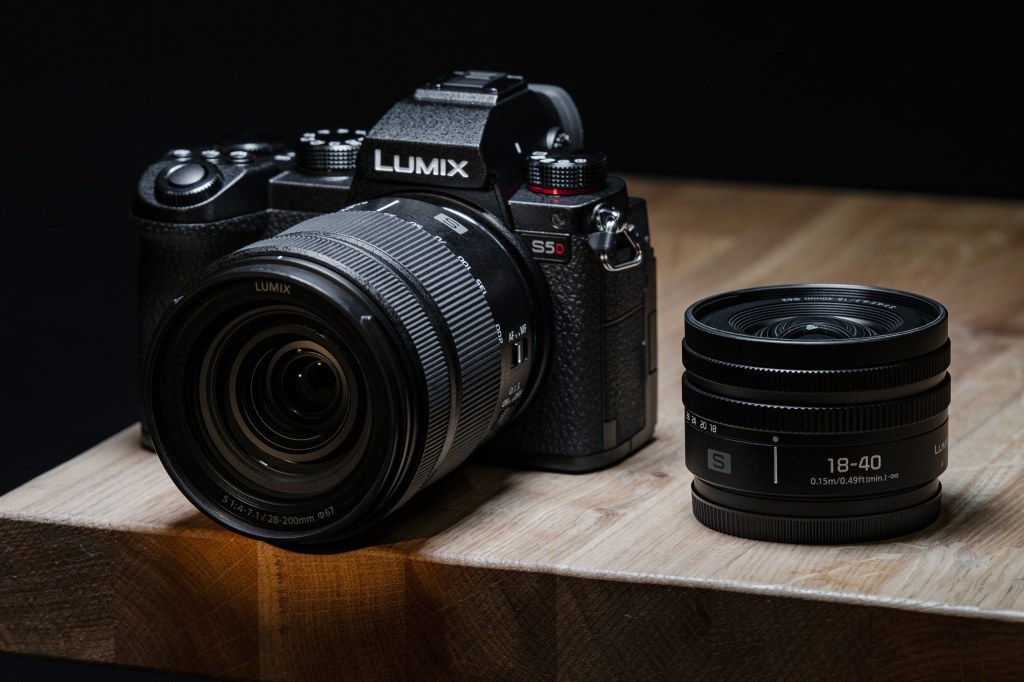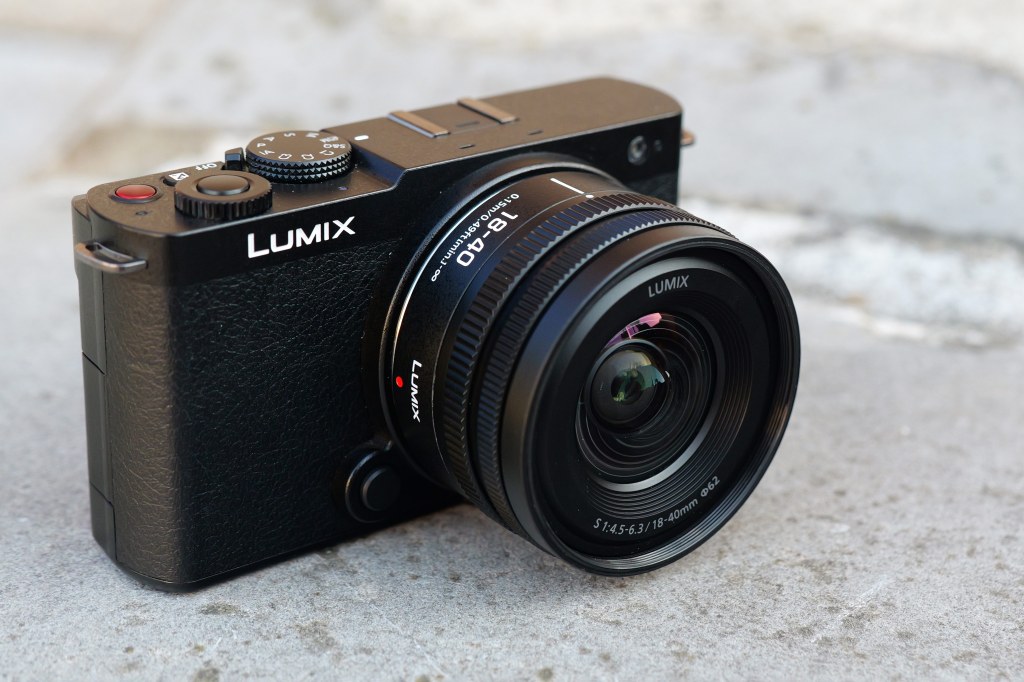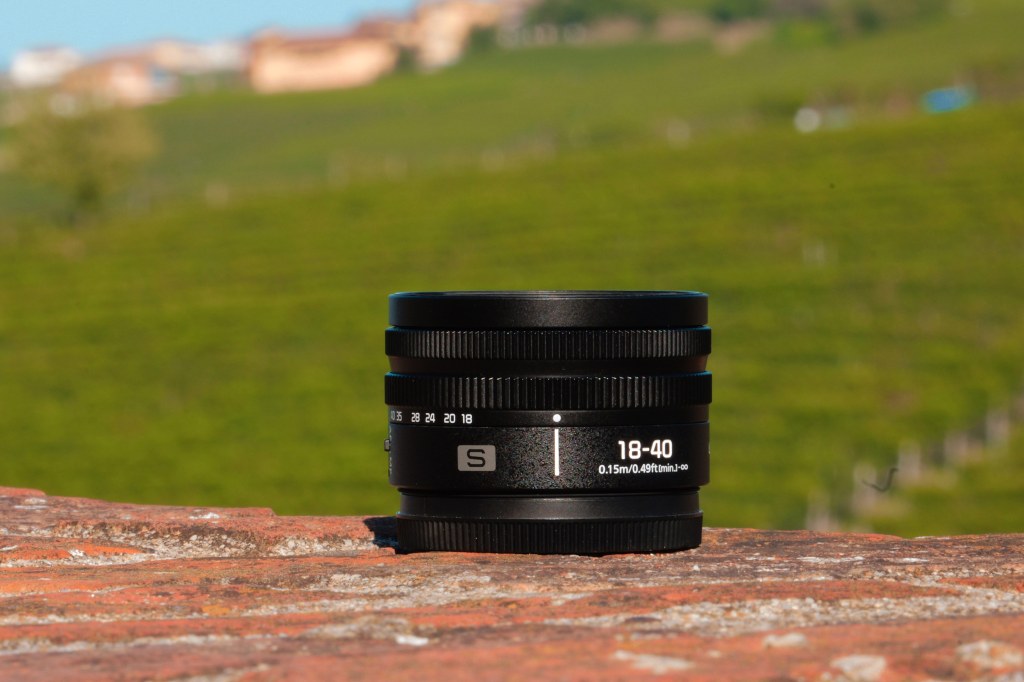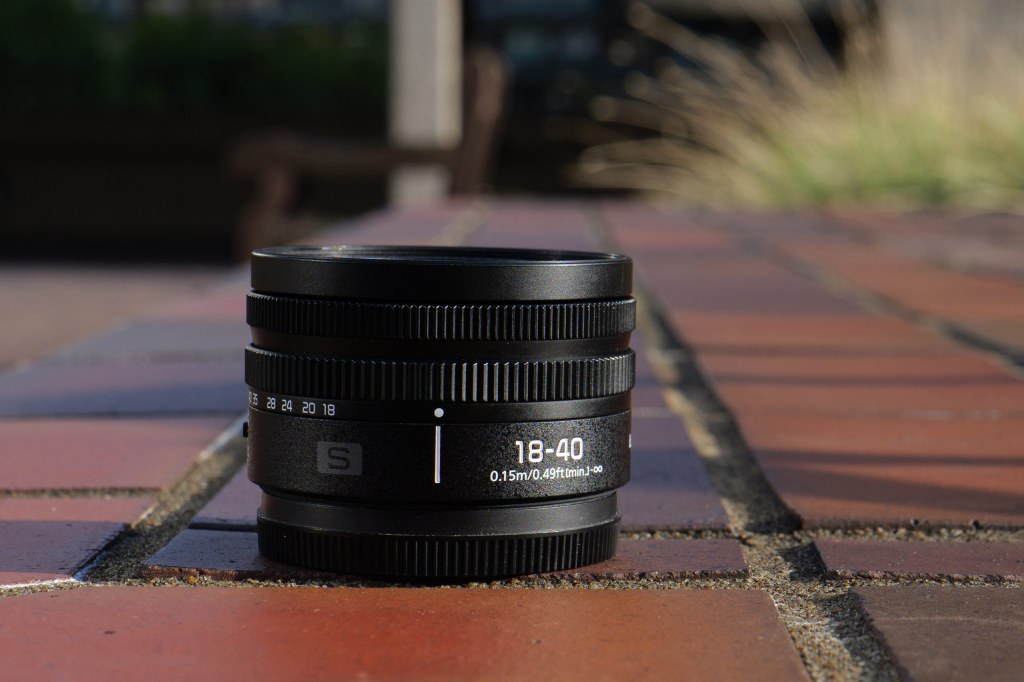Panasonic has announced the Panasonic Lumix S5D, a new Panasonic’s full-frame camera, along with officially announcing the Lumix S 18-40mm full-frame L-mount lens. It will be available from the end of October for €1,599 / £1,399 (RRP) for the kit which includes the LUMIX S Series 18-40mm F4.5-6.3 lens, or RRP €2,099 / £1,799 for the kit which includes the 28-200mm F4-7.1 lens.
This makes the S5D slightly cheaper than the Panasonic Lumix S5 II, which is available for around £1549 body only. The 18-40mm F4.5-6.3 lens is designed to work with the small Panasonic Lumix S9.
Panasonic Lumix S5D vs S5II – What are the differences?
A major advantage of the S5II at the time of its release was the new Phase Detection autofocus system (PDAF), so it is surprising that Panasonic decided to use the older Depth from Defocus (DFD) contrast based AF system in the S5D, however when the S5D is paired together with the DJI LiDAR Range Finder it delivers such speed and accuracy which surpasses even the performance of Phase Detection AF.
The S5D is now compatible with the DJI LiDAR autofocus system and the DJI RS 3 Pro gimbal. When connected to the DJI LiDAR Range Finder which is able to cast 43,200 ranging points, it improves the camera’s manual focusing ability, allowing you to locate and track focus points with ease and apply extremely precise focus adjustments. This system also has a better AF performance when shooting video in low light conditions.
We see a drop in recording quality to 4K, and along with PDAF, Car and Motorcycle AF tracking modes have been emitted from this newer model too. Is this an attempt from Panasonic to encourage its customers to invest in the LiDAR system for better AF performance?
Both cameras can be connected to external screens for recording and monitoring, but the S5D lists only the Atomos Ninja V+ as compatible external screen whereas the S5II also lists the Ninja V and the Shogun CONNECT too. Now, this is not a major setback however it would have been a welcome addition given The Shogun CONNECT’s larger size and connectivity and streaming advantages.
The electronic viewfinder in the S5D (2.36m-dot) is significantly lower resolution compared to the 3.68m-dots in the S5II, the viewfinder magnification also slightly lags behind with 0.74x but both feature 100% viewfinder coverage, so you needn’t worry about your composition and framing.
| Panasonic Lumix S5D | Panasonic Lumix S5II | |
| Sensor | 24.2 MP full-frame CMOS | 24.2 MP full-frame CMOS, with PDAF |
| ISO | ISO 100-51,200 | ISO 100-51,200 |
| IBIS | 5 axis up to 5 stop | 5 axis up to 5 stop |
| FPS | 7/5fps (AFS/AFC) | 9/7fps (AFS/AFC) |
| AF working range | EV -6 -20 | EV -6 -18 |
| AF tracking | Face, Eye, Body, Human, Animal, | Human, Animal, Car, Motorcycle |
| Video | 4K RAW 60p/50p | 6K/30p, 4K/60p |
| Viewfinder | 2.36m dot OLED EVF, 0.74x magnification | 3.68m dot OLED EVF, 0.78x magnification |
| LCD screen | 3in, 1.84m-dot TFT LCD | 3in, 1.84m-dot |
| Battery life | 430 shots (LCD) 450shots (EVF) | 370 shots |
| Size | 132.6 x 97.1 x 81.9mm | 134.3 x 102.3 x 90.1 mm |
| Weight | 714g (with battery and card) | 740g (with battery and card) |
Even though most specs remained the same, the main differences between the two models is that the S5D received an older and slower, contrast-based AF system seen in the original S5, and that recording quality dropped from 6K to 4K, but one can argue that these differences are reflected in its reasonable price tag.
From Panasonic: Panasonic is pleased to introduce the LUMIX S5D, a new hybrid full-frame mirrorless camera that achieves excellent performance in both video and photo as well as exceptional flexibility for videographers and photographers.
Based on the compact design of the LUMIX S5, the refreshed S5D comes DJI LiDAR AF ready. When the S5D is paired with DJI LiDAR Range Finder Module and DJI RS 3 Pro Gimbal, distance measurement information is sent to the camera via USB, and the camera drives the focus, so no focus motor is required, enabling easier handling with a more compact size and greater freedom of shooting. Furthermore, there is no need for lens calibration adjustments, which saves setup time. Thanks to the LiDAR’s high-speed 43,200 ranging points within a 14-meter distance, extremely fast AF is realized, which is also effective when shooting in low-light conditions.
Furthermore, LUMIX S5D contains all of the features appreciated in the LUMIX S5, including a 24.2-megapixel 35mm full-frame CMOS sensor that boasts wide dynamic range and high sensitivity performance, and realises a maximum ISO 51200 of crystal-clear high sensitivity video with Dual Native ISO technology.
The S5D will be available from the end of October for RRP €1,599 / £1,399 for the kit which includes the LUMIX S Series 18-40mm F4.5-6.3 lens, or RRP €2,099 / £1,799 for the kit which includes the 28-200mm F4-7.1 lens.
Exceptional video recording performance for cinema-quality film creation
The LUMIX S5D delivers superb video performance and is capable of 4K 60p/50p 4:2:0 10-bit, and 4K 30p/25p 4:2:2 10-bit internal recording up to 30 minutes. It is also capable of 4K 60p/50p 4:2:2 10-bit HDMI output. For 4K 30p/25p 4:2:0 8-bit internal recording, there is no time limit.
In addition to C4K video recording, the LUMIX S5D is capable of RAW video data output to ATOMOS NINJA V over HDMI at a resolution of 5.9K (5888×3312) 29.97p/25p, 4.1K (4128×2176) 59.94p/50p and Anamorphic 3.5K (3536×2656)/50p. A variety of video recording assist functions such as the Vector Scope Display, Master Pedestal Adjustment and SS/Gain Operation(SEC/ISO, ANGLE/ISO, SEC/dB) are also available.
The LUMIX S5D delivers 14+ stops of dynamic range, virtually the same as those of the Panasonic cinema cameras, to precisely reproduce everything from dark to bright areas. The ability to capture accurate colours and skin tones is a must for any filmmaker. The LUMIX S5D imports the renowned colour science of Panasonic’s VariCam line-up of cinema cameras, as well as V-Log / V-Gamut.
With Slow & Quick mode, impressive video slow and quick motion in 4K (1-60fps, 30x quick to 2.5x slow) or in FHD (1-180fps, 60x quick to 7.5x slow) is available.
High image quality even in low light situations with Dual I.S. to suppress blurring
The LUMIX S5D boasts a wide dynamic range and reproduces sharp images with exceptional clarity. Noise is minimised even when shooting at maximum ISO 51200 high sensitivity, making it an ideal camera to use in low light situations.
The LUMIX S5D features Dual Native ISO sensitivity, a technology that was first introduced in the Panasonic professional cinema camera VariCam line-up. Normally, noise increases as sensitivity rises with a single native ISO image sensor. However, the image sensor with Dual Native ISO in the S5D minimises noise generation by choosing an optimal circuit to use according to the sensitivity before gain processing. As a result, it allows a maximum of ISO 51200 high sensitivity recording. Dual Native ISO gives film creators a greater variety of artistic choices as well as the ability to use less light on set, saving time. The LUMIX S5D’s Dual Native ISOs are 640 and 4000.1
The LUMIX S5D integrates the Body I.S. (Image Stabiliser) for powerful handshake correction. Panasonic developed an algorithm that precisely calculates shake information acquired not only from the gyro-sensor, but also from the image sensor and accelerometer sensor. This enables more accurate shake detection and compensation, making it possible to use a 5-stop slower shutter speed2. Combining the Body I.S. (5-axis) in the camera and the O.I.S. (Optical Image Stabiliser, 2-axis) in the LUMIX S Series lens the 5-axis Dual I.S.2 compensates for blurring, allowing the use of a 6.5-stop slower shutter speed*3.
It is highly beneficial in telephoto shots and in adverse situations, such as in low-light or one-handed shooting. The 5-axis Dual I.S.2 works for both photo and video recording, including 4K. The Body I.S. compensates for camera movement even when other L-Mount lenses without O.I.S. are used.
*1 When recording mode is set to V-Log. The sensitivity varies depending on the recording mode.
*2 Based on the CIPA standard [Yaw/Pitch direction: focusing distance f=60mm when S-R2060 is used.
*3 Based on the CIPA standard [Yaw/Pitch direction: focusing distance f=200mm when S-E70200 is used. Firmware must be updated to the latest version.
Reliable and flexible for optimum creative freedom
The compact LUMIX S5D boasts outstanding mobility while still achieving exceptional performance. To withstand heavy field use, the LUMIX S5D is composed of a magnesium alloy full die-cast body and is splash/dust-resistant*1.
With an optimum layout of heat dispersion components, heat is effectively transferred outside which results in stable, continuous video recording for long periods.
The LUMIX S5D has a large LVF (Live View Finder) with a high magnification ratio of approx. 0.74x, as well as a high-precision, high-speed OLED (Organic Light-Emitting Diode) display which features a 2,360K-dot high resolution. Adoption of OLED for the LVF achieves high speed response with minimum time lag of less than 0.005 sec. With an eyepoint of approximately 20 mm, it offers high visibility with comfort for users wearing glasses.
A 3.0-inch free-angle LCD in 3:2 aspect with 1,840K-dot high resolution provides touch control. Composition during recording in various popular aspect ratios such as 16:9, 4:3, 1:1, 4:5, 5:4 and 9:16 can be checked with the Frame Marker function. A REC Frame Indicator identifies whether the camera is recording or not.
The LUMIX S5D has a double SD Memory Card slot – one slot complies with UHS-I and the other with the high speed, high-capacity UHS-II (Video Class 90).
The camera’s battery can be recharged either via AC or USB according to the user’s convenience.
*1 Dust and Splash Resistant does not guarantee that damage will not occur if this lens is subjected to direct contact with dust and water.











